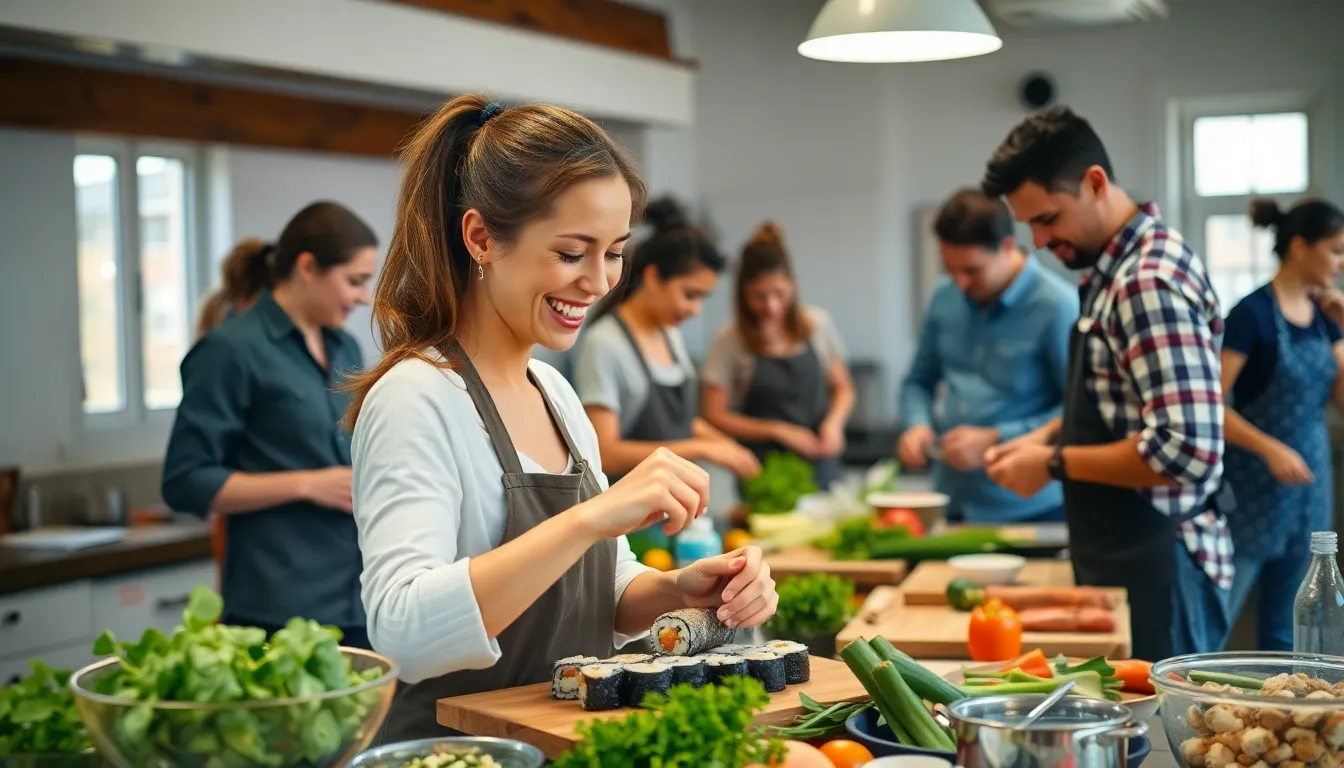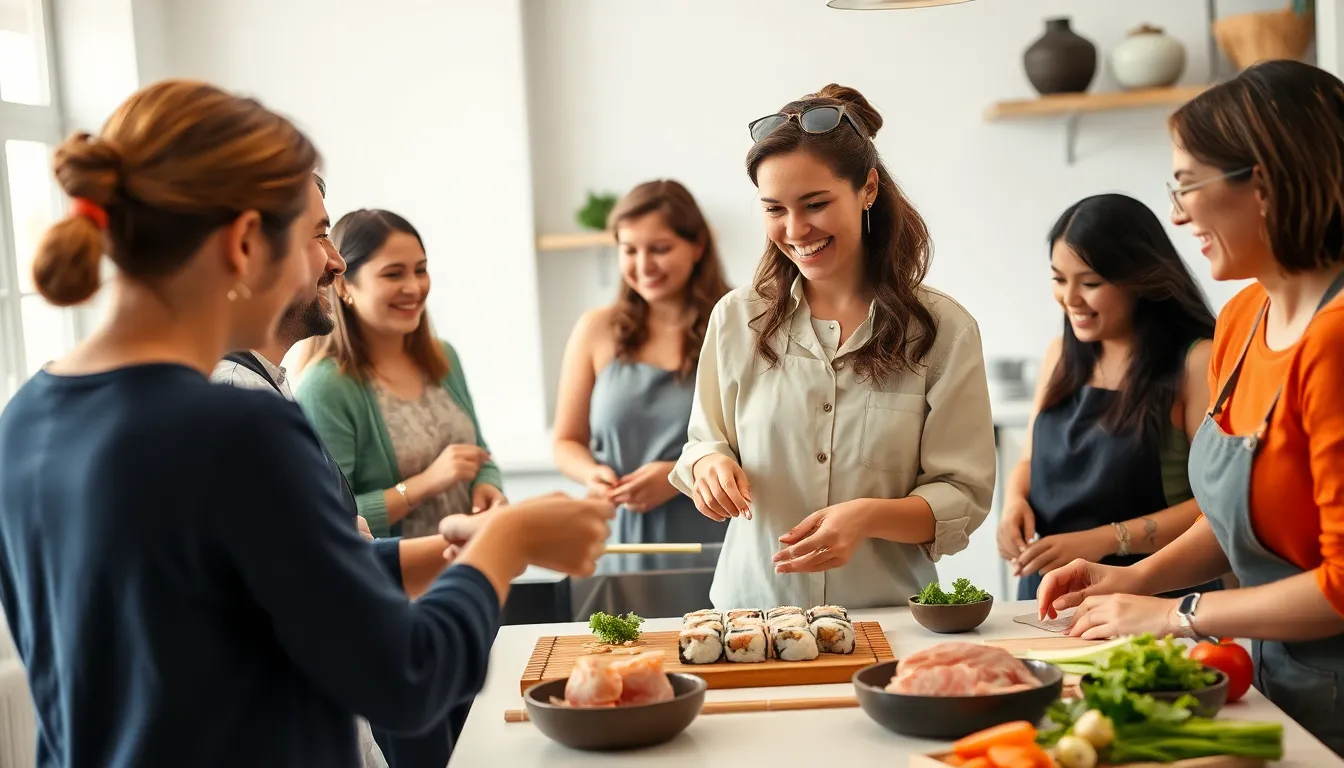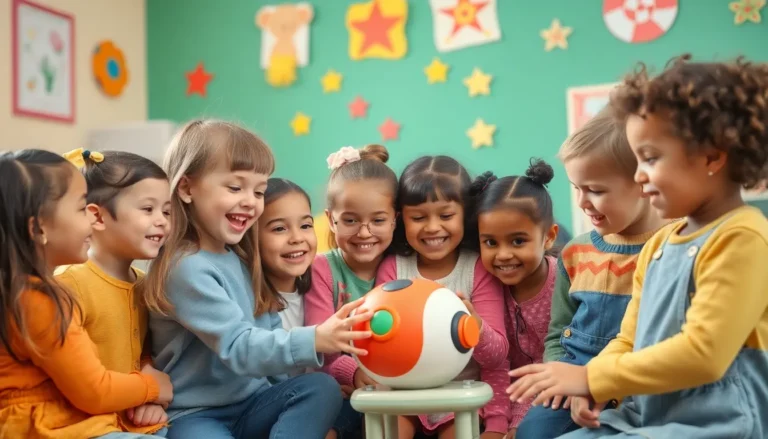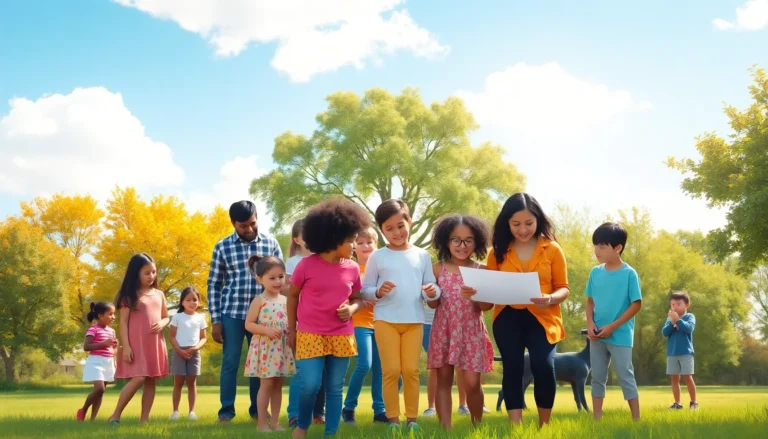Table of Contents
ToggleImagine stepping into a kitchen where the only thing on the agenda is fun—no pressure, no burnt toast. Interactive cooking experiences are revolutionizing the way people connect with food, turning mundane meal prep into a culinary adventure. Whether it’s mastering the art of sushi rolling or whipping up gourmet pasta from scratch, these hands-on classes bring out the inner chef in everyone, even those who usually burn water.
Gone are the days of simply watching cooking shows; it’s time to roll up those sleeves and get involved. These experiences not only teach valuable skills but also create lasting memories with friends and family. So grab your apron and get ready to spice up your life—because who knew cooking could be this much fun?
Overview of Interactive Cooking Experiences
Interactive cooking experiences provide hands-on engagement that enhances meal preparation. Participants can learn various techniques through classes such as sushi rolling and gourmet pasta making. Emphasizing skill development occurs alongside enjoyment, regardless of prior cooking knowledge. These activities encourage creativity and experimentation in the kitchen.
Classes typically include guided instruction from experienced chefs. During sessions, participants receive personalized feedback, which improves their culinary techniques. Group settings foster camaraderie, allowing friends and families to bond over shared culinary challenges. This social aspect makes cooking more accessible and enjoyable for everyone involved.
Benefits of interactive cooking extend beyond skill acquisition. Culinary classes contribute to building confidence in the kitchen, encouraging individuals to try new recipes. Expanding one’s culinary repertoire often leads to healthier meal choices, as participants learn about fresh ingredients and cooking methods.
Various venues host these experiences, including local culinary schools, restaurants, and pop-up events. Each setting provides unique atmospheres that enhance the overall experience, making it vital for participants to select classes that align with their interests. Engaging with different cuisines exposes participants to diverse culinary traditions, enriching their cooking knowledge.
Overall, interactive cooking experiences transform meal preparation into engaging events, helping individuals discover the joy of cooking together while gaining valuable skills.
Benefits of Interactive Cooking Experiences

Interactive cooking experiences offer numerous advantages, particularly in skill enhancement and social engagement.
Skill Development
Skill development occurs through hands-on activities in the kitchen. Participants learn various techniques, from chopping to plating, under the guidance of experienced chefs. Classes emphasize building a strong foundation in essential cooking skills while encouraging creativity. New students often leave feeling empowered and confident in their abilities. Exposure to different cuisines broadens culinary knowledge, introducing unique flavors and cooking methods. These experiences also facilitate self-discovery, enabling individuals to develop personal styles and preferences. Notably, mastering these skills often leads to healthier meal options as participants become more mindful of ingredient choices.
Social Interaction
Social interaction thrives in group cooking settings. Friends, relatives, and even strangers come together to share the joys of cooking. Collaborative environments often foster teamwork, breaking down barriers and enhancing communication. Experiences like sushi rolling or pasta making encourage laughter and camaraderie among participants. Discussions about techniques and personal preferences create a vibrant atmosphere, enriching the overall experience. Cultivating these connections not only strengthens relationships but also builds a supportive community around food. Engaging with others while cooking often leads to lasting memories that participants cherish.
Types of Interactive Cooking Experiences
Interactive cooking experiences come in various forms that cater to different preferences and lifestyles. Two prominent types include virtual cooking classes and in-person cooking workshops.
Virtual Cooking Classes
Virtual cooking classes provide a convenient platform for participants to learn from the comfort of their homes. Live sessions led by skilled chefs allow individuals to engage with instructors and ask questions in real-time. Various cuisines and cooking techniques are available, enabling participants to explore global flavors. Ingredient lists are often shared prior to classes, allowing attendees to prepare in advance. Many platforms record sessions, granting individuals the option to revisit lessons later. Families and friends can connect through these classes, making cooking a shared experience despite physical distance.
In-Person Cooking Workshops
In-person cooking workshops create lively environments where participants can interact face-to-face. Guided by experienced chefs, these sessions provide hands-on instruction that enhances learning. Classes typically focus on specific themes, like baking or regional cuisine, offering ample opportunity for skill development. Participants often benefit from immediate feedback, which helps refine their techniques. Group dynamics foster collaboration, promoting teamwork and camaraderie among attendees. Many workshops also incorporate discussions on ingredient selection and preparation methods, enriching the overall culinary experience.
Popular Platforms for Interactive Cooking Experiences
Interactive cooking experiences thrive on various platforms that cater to different preferences and learning styles. The choice of platform contributes significantly to the overall enjoyment and accessibility of cooking classes.
Online Resources
Numerous online platforms offer cooking classes that reach participants worldwide. Websites like MasterClass and Sur La Table feature interactive sessions led by professional chefs. Participants can attend live-streamed classes or access recorded tutorials. Users benefit from a wide range of culinary styles, including vegan cooking and Thai cuisine. Moreover, many platforms provide user-friendly interfaces that make navigation easy and enjoyable. These resources emphasize community engagement through discussion boards and social sharing, fostering a sense of connection despite geographical barriers.
Local Culinary Schools
Local culinary schools create immersive cooking experiences in physical settings. In-person classes offer hands-on instruction and instant feedback from trained instructors. Many schools highlight themed workshops, such as pasta making or baking techniques. Participants engage directly with instructors and peers, enhancing the collaborative atmosphere. Schools often attract individuals eager to build skills and confidence in the kitchen. Additionally, connections made during these classes can lead to friendships and a shared passion for culinary arts. Local schools enrich the community by promoting food culture and culinary heritage.
Interactive cooking experiences offer a unique blend of education and enjoyment. They empower individuals to explore their culinary potential while fostering meaningful connections with others. Whether through virtual classes or in-person workshops, participants gain confidence and skills that extend beyond the kitchen.
These experiences not only enhance culinary knowledge but also promote healthier eating habits and creativity. As people gather to share their love for cooking, they create lasting memories and build a supportive community around food. Embracing these interactive opportunities can transform meal preparation into a delightful adventure for everyone involved.








